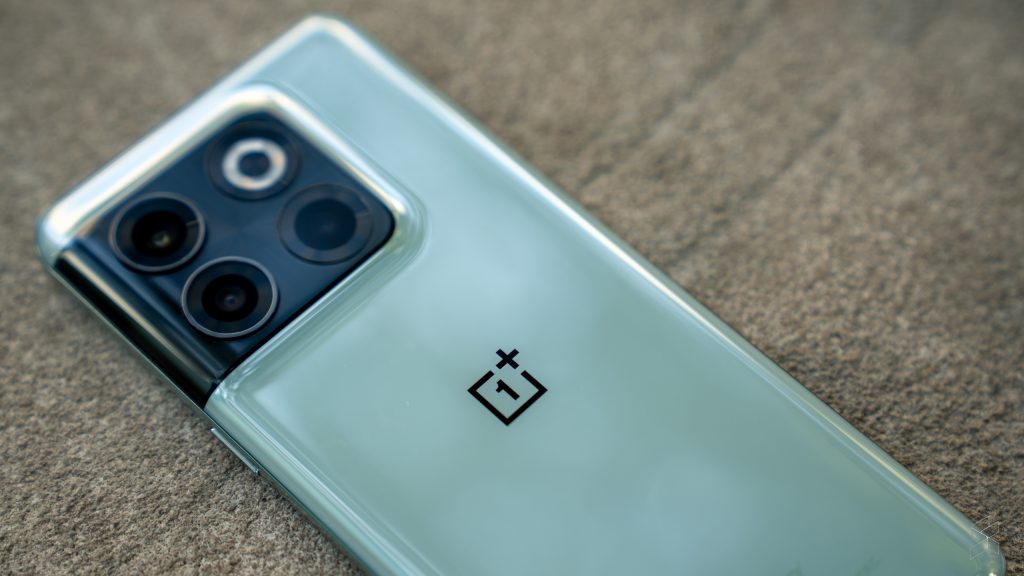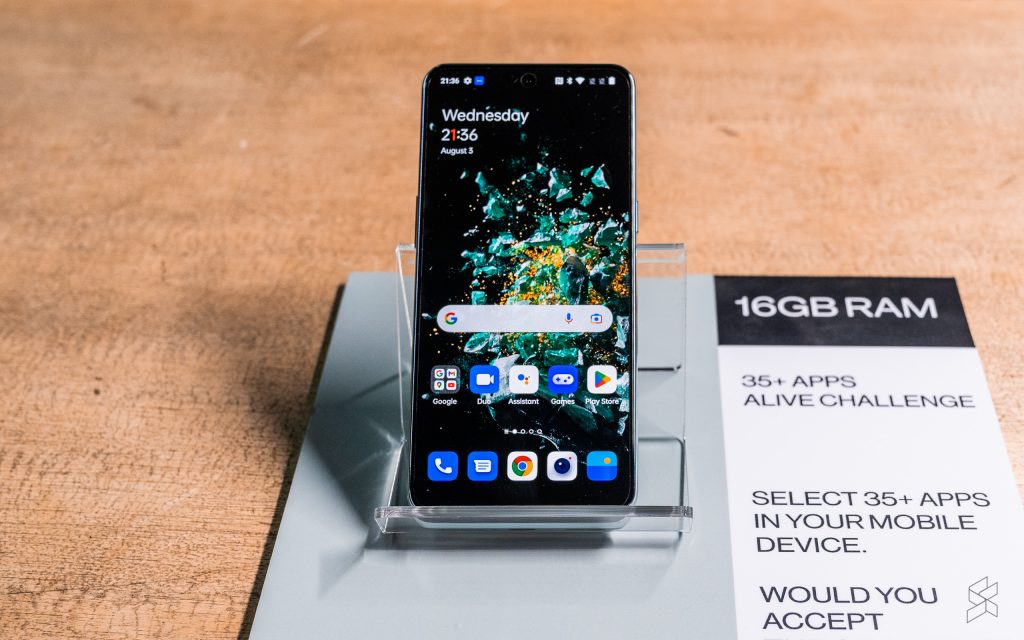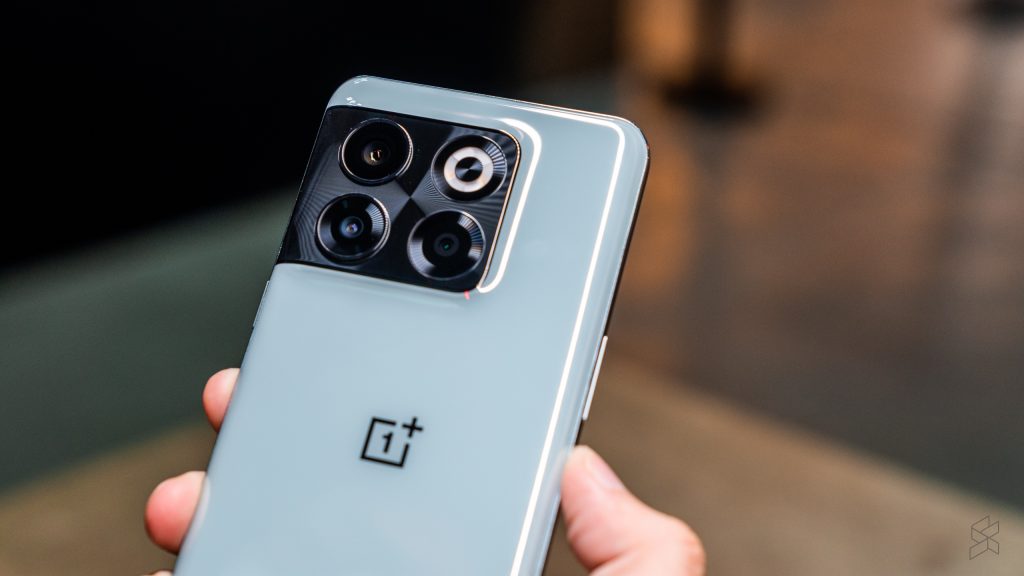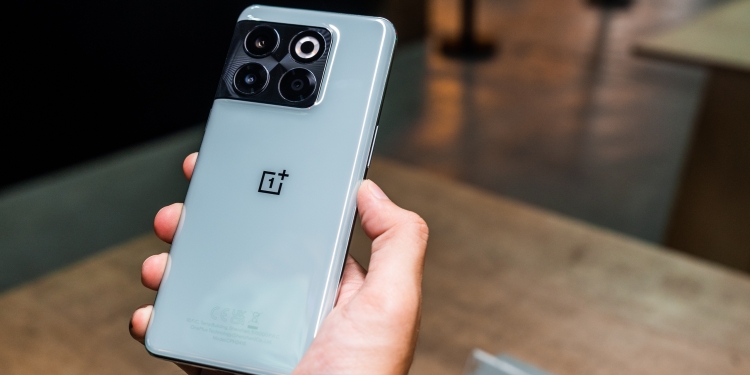Ever since its 3T was revealed in 2016, OnePlus has been using the second half of the year as an opportunity to give its flagship smartphones a mid-cycle spec bump, identifiable by the ‘T’ suffix. Tonight, the company pulled the covers off the OnePlus 10T, which gains a performance upgrade over its predecessor, the 10 Pro, but also loses a few key features.
OnePlus 10T pricing and availability
Globally, the OnePlus 10T is available in two configurations. The base model features 8GB of RAM and 128GB of storage and is priced at US$649 (RM2,890), though you’ll need 16GB of RAM to get 256GB of storage, costing US$749 (RM3,339) in the process. By comparison, the 10 Pro is priced at US$869 (RM3,870) with 12GB of RAM and 256GB of storage; the same model in Malaysia costs RM4,199 retail.
In Malaysia, the OnePlus 10T will be offered solely in the top 16GB RAM/256GB storage variant and will be available for purchase starting September 1, with pricing to be revealed on August 18.
OnePlus 10T specs and features

The big news is that the OnePlus 10T gets the latest Qualcomm Snapdragon 8+ Gen 1 processor, as seen in the Asus ROG Phone 6 and Xiaomi 12S. This is coupled with LPDDR5 RAM and UFS 3.1 storage.
To keep all these components cool, OnePlus upgraded the 3D Cooling System, adding a cryo-velocity vapour chamber – the largest ever fitted to a OnePlus device – to dissipate double the heat compared to traditional phone vapour chambers.
Also revised is the HyperBoost Gaming Engine, which continues to feature a General Performance Adapter (GPA) Frame Stabiliser but adds a GPU Load Control (GLC) to increase graphic rendering efficiency and reduce power consumption while gaming. An LSTouch function also improves touch responsiveness, working with the touchscreen’s unchanged 1,000Hz touch sampling rate to reduce latency by 10ms.

The 10T’s battery is one of the items OnePlus has downgraded from the 10 Pro – capacity has reduced slightly from 5,000 to 4,800 mAh, giving around 26 hours of use. To make up for this shortfall, the company boosted SUPERVOOC charging to an impressive 150W; this ‘Endurance Edition’ version of the system can fully charge the battery in as little as 19 minutes. However, you don’t get wireless charging this time around, though a 160W charger is included in the box.
OnePlus has added a Battery Health Engine to extend the lifespan of the battery in spite of the high charging wattage. The Smart Battery Health Algorithm tracks and controls the maximum charging current to keep it in a safe range, and the company claims the phone can even continuously repair electrodes during charging cycles to prevent damage. All this is said to enable the 10T to retain at least 80% of its original capacity after 1,600 charge cycles (even when using the full 150W), equivalent to around four years of use.

The cameras are another area that OnePlus has scaled back from the 10 Pro. The OnePlus 10T grabbed headlines last month when it emerged that it will no longer feature Hasselblad branding, a move the company said helped it hit its price point. The f/1.8 main camera switches a 48MP Sony IMX789 sensor for a slightly smaller 50MP IMX766 with optical image stabilisation, something found on many popular smartphones launched this year such as the Nothing Phone (1).
The 50MP f/2.2 ultra wide on the Pro model has also been downgraded to just 8MP, while the telephoto camera has been replaced by a 2MP macro shooter. OnePlus told us that despite the removal of Hasselblad branding the company’s wider collaboration with the high-end Swedish camera brand continues. Sitting at the front of the phone is a 16MP (down from the 10 Pro’s 32MP) selfie camera.

The hole-punch front cam sits within the 6.7-inch flat AMOLED display, yet another item downgraded from its predecessor. It has a lower Full HD+ (2410×1080) resolution, and while it’s still a 120Hz panel, the adaptive refresh rate adjusts downwards in 30Hz steps (60 and 90Hz). Peak brightness is also rated at 950 nits instead of 1,300, although it still supports HDR10+.
Aside from the lack of a curved display and Hasselblad logo, the OnePlus 10T looks very similar to the 10 Pro, down to the wraparound camera bump. Corning Gorilla Glass 5 covers the front and back, the latter laser-etched with a ‘flickering’ sand effect – inspired by basalt – on the matte Moonstone Black version; Jade Green models have a smooth finish. Malaysia will only be getting the green variant, however.
One notable omission is OnePlus’ trademark alert slider, claimed to be necessary to fit the 8+ Gen 1 chip and 150W charger while maintaining a ‘thin and light’ design. The company says this does not mean the switch won’t be fitted to future models.
The OnePlus 10T ships with Android 12 out of the box, customised with Oxygen OS 12.1 that adds an AI Booster System. There are six optimisations to improve performance, including working with the processor to increase cold boot speeds. Oddly, the phone will not get the new Oxygen OS 13 (which adds Spotify and food delivery apps to the always-on display) from launch, though it will be available later this year. OnePlus is promising three major Android version updates and four years of security updates.








